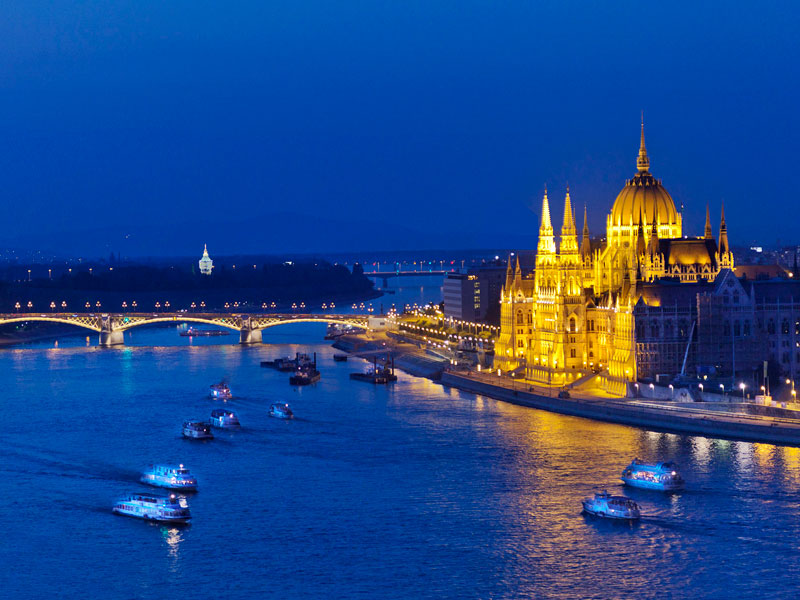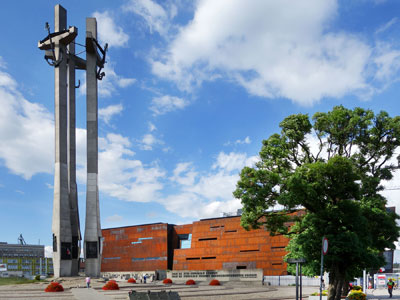What’s new in Eastern Europe for 2015
This item appears on page 53 of the April 2015 issue.
Eastern Europe has experienced more change in the last generation than any other corner of Europe. With war-era grandpas now gone, across the former Warsaw Pact zone new museums and memorials deal candidly with the dark side of communism… and fascism before that. And now that the economy is perking up (with European Union help), impressive renovations and infrastructure improvements are springing up across the region. Here’s the latest.
• In Prague, CZECH REPUBLIC, the National Museum on Wenceslas Square is slated to wrap up a years-long renovation. By mid-2015, visitors should be able to see its interior, richly decorated in the Czech Revival style that heralded the 19th-century rebirth of the Czech nation.
• At Prague Castle, the St. Vitus Treasury recently opened in the Chapel of the Holy Cross, displaying precious reliquaries dating as far back as the reign of Charles IV.
• The city’s Vyšehrad river embankment is a fun place to hang out, having been recently spiffed up with cafés, restaurant barges and a lively farmers’ market on Saturdays.
• Direct trains from Prague to Vienna will now be run by RailJet (Austrian high-speed service) rather than EuroCity, making the journey in just over four hours and cutting a half hour off travel time. Prague is no longer connected to Amsterdam via a night train.
• It was huge news when POLAND’s own John Paul II became a Catholic saint, causing construction at sites dedicated to the Pope to go into full swing. In Kraków, construction is ongoing at the new St. John Paul II Center, which will have a sanctuary and museum.
• In Wadowice, about an hour outside of Kraków, John Paul II’s family home has been renovated and turned into a museum.
• In Warsaw, the Museum of Polish Jews recently opened its permanent collection, showcasing a thousand years of Jewish history in Poland through multimedia displays, paintings and artifacts.
• A new airport train conveniently zips travelers to downtown Warsaw, and an east-west Metro line was scheduled to open early this year.
• Warsaw’s Srodmiescie (Downtown) district has emerged as the city’s hipster dining mecca.
• Gdansk’s new European Solidarity Center, located in a rusted-metal building at the entrance to the shipyards where Lech Walesa’s 1980 strikes took place, is one of Europe’s best sites about the end of communism. The shipyards, themselves, are undergoing a multiyear redevelopment into a “New City” residential and commerce zone, though key Solidarity landmarks are unaffected.
• Gdansk has a surprisingly rich Shakespearean tradition. Its new Shakespeare Theater, with its controversially minimalist, blocky, black facade, will host the annual Shakespeare Festival in early autumn as well as Polish-language productions year-round.
• In SLOVENIA’s capital, Ljubljana, a fun way to travel is via green electric carts, called Kavalir, which transport people around the downtown core for free. (Just flag one down.)
• The Jože Plec˘nik House in Ljubljana, dedicated to the famous Slovene architect, is closed for renovation until the fall.
• Metelkova City, a former military installation in Ljubljana, is now a colorful, funky, graffiti-slathered squatters’ colony. This Habsburg-built complex — with barracks, warehouses and a prison — has been transformed into galleries, theaters, bars and nightclubs.
• In HUNGARY, Budapest’s spectacular Parliament building, with its soaring Neo-Renaissance dome, is one of the city’s top attractions. To ensure a spot on a tour, visitors should pay the extra 75¢ per ticket to book online a day or two in advance (www.jegymester.hu). Same-day tickets are sold at the new underground visitors’ center.
• Budapest has gorgeously restored the March 15 Square as a fine park, with partially excavated Roman ruins on display.
• Liberty Square’s new monument to the Hungarian victims of the Nazis gives the impression that Hungary was a peaceful land unwittingly caught up in the Nazi war machine (when it actually was an ally of Nazi Germany for three years).
• The square in front of the Nyugati train station will be renovated over the next few years, so the station area will likely be in transition, with many services and tram stops temporarily relocated.
• The Franz Liszt Academy of Music has been stunningly restored inside and out, and concerts there are much more affordable than at the Hungarian State Opera.
• The Museum of Fine Arts, a giant collection of mostly European art in Budapest’s City Park, is likely closed for renovation through 2017. Budapest has embarked on ambitious plans to build a new “Museum Quarter” in the corner of the City Park near today’s 1956 Monument. Eventually, this will consolidate several far-flung museum collections.
• The Budapest Zoo turned an old amusement park into Holnemvolt Park, with exotic animals, puppet shows, pony rides and some favorite rides from the amusement park.
• And Budapest now has its own Ferris wheel, the Budapest Eye, located in Elisabeth Square.
From north to south, the countries of Eastern Europe are experiencing extensive growth and change, making this an especially exciting and vibrant time to visit.
Rick Steves writes European travel guidebooks and hosts travel shows on public television and public radio. Reach him care of ITN, www.ricksteves.com.


